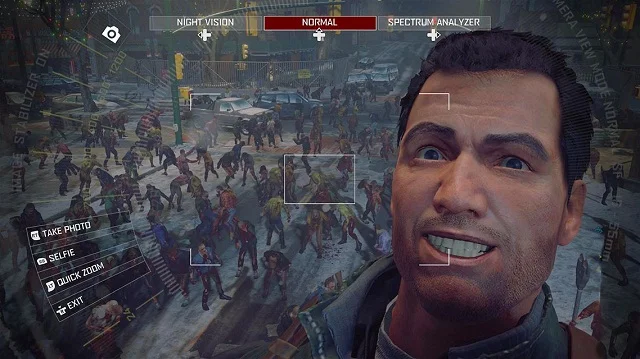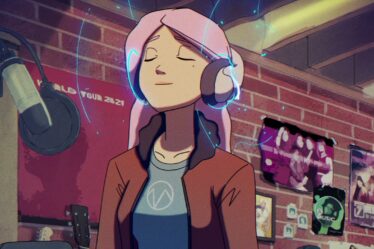
This article was originally published in Italian on GeekGamer.it in 2016.
I don’t know what happened over at Capcom Vancouver, but one thing is certain: the radical changes made to the Dead Rising series with this fourth installment are anything but acceptable. The paradox is clear from the very first minutes of gameplay, when a wave of nostalgia catches you off guard: the return of Frank West as the protagonist and the idea of an adventure set in the town of Willamette, where it all began, makes everything seem quite appealing to long-time fans. It’s a kind of homage to Capcom’s historical roots, but one that quickly gets undermined by a series of decisions likely driven more by a desire to appeal to a wider audience than by any rediscovered creative spark from the Canadian team.
Dead Rising, the first one, is still one of the best titles available on both older and newer consoles. A well-executed mix of horror atmospheres, an aesthetic teetering between camp and the surreal, and gameplay mechanics that reward players’ strategic efforts and their dedication to managing time-sensitive objectives by memorizing the quickest routes through the massive environment. It was a standout game created by a Japanese team led by Keiji Inafune (before he fled to Mars with the money from the Mighty No. 9 crowdfunding campaign, of course) and eventually handed over to a Canadian team that was later absorbed into the Japanese giant, under the name Capcom Vancouver. With the arrival of unlikely spin-offs, digital-only episodes still exclusive to the Xbox 360, and inconclusive DLC for the third game, it became clear that the direction of the series was far from settled. In those past examples, however, one could sense the developers’ efforts to strike a balance between the hardcore identity of the first game and the commercial need to reach a broader audience. As the years passed, the punishing time-management mechanics gradually became more forgiving, the introduction of online play modes and a rotating cast of characters allowed the Canadian team to put its own spin on the franchise’s identity, albeit with a few missteps along the way. But with Dead Rising 4, these changes, which were previously made with discretion and respect for the original material, have been pushed to the point of making it almost indistinguishable from any other urban sandbox game… aside from the zombies, of course.
The first signs of Dead Rising 4’s revolutionary spirit are apparent right away, when you take control of an unrecognizable Frank West (now resembling Bruce Campbell in Ash vs Evil Dead) as he battles thousands of zombies and… a ghost (!). The ghost haunts him, reminding him that it’s been years since his big scoop in Willamette, when he exposed the government’s role in creating a zombifying virus, and that his success is now just a distant memory. Having retired from investigative journalism to become a teacher, it only takes a push from one of his students to sneak into a secret base in the same Colorado town to rekindle his desire to score the scoop of the century. A rapid series of events soon pits the player against a new outbreak and introduces us to a character named Frank West, who shares little in common with the protagonist from the first game.
The fact that Dead Rising 4 doesn’t make much effort to reconnect with past stories or reference the other protagonists’ exploits quickly reveals the authors’ intention to create a sort of fresh start, using familiar elements. However, neither Frank nor Willamette succeed in delivering the nostalgic feeling one might expect—whether due to Frank’s almost entirely rewritten appearance and personality, or the complete reconstruction of the town and mall after the events of the first game. The script puts a lot of emphasis on Frank’s sharp, one-liner-filled dialogue (which is often subpar, especially in the Italian version), without building any real tension between him and the other characters, reducing the story to a string of low-quality comedic sketches, occasionally punctuated by gruesome zombie-killing scenes and crude language. The writers have served up a plot involving government conspiracies, genetic mutations, and science fiction, against the backdrop of a banal generational conflict between Frank and his young student, culminating in what seems like a symbolic passing of the torch. Unfortunately, the dialogue and situations rarely manage to elicit more than a guilty chuckle, and the attempt to turn Frank into a full-on wisecracking clown—especially when it’s not necessary—clashes jarringly with the personality we knew before. The story mode can be completed in about ten hours, though the real ending is locked behind a Season Pass or DLC, one of the most blatant cash grabs of recent years.
Given what I saw in Dead Rising 3, my expectations for this new installment were pretty low, especially after reading Capcom’s excited press releases celebrating the removal of the series’ signature time-management mechanics. Dead Rising 4 is exactly that: a video game without tension or any particular merit. As of writing, it can only be played on one difficulty level, making it nearly impossible to ever face the dreaded game over screen. What remains of what we think of as “Dead Rising” is simply a large open world filled with interactive elements, dozens upon dozens of weapons and vehicles to combine in deadly combos (without any context explaining Frank’s new abilities, unlike in previous games), and thousands of accessories and outfits to customize your appearance in a race to find the most ridiculous outfit possible. Reaching the credits is just a matter of time, as anyone can do it without much trouble, especially by leveling up Frank through kills and objectives and unlocking useful perks in the skill tree. And the simplifications don’t stop there: the iconic psychopaths—those legendary bosses that made escort missions so nerve-wracking—are completely gone. In their place, DR4 offers a few sporadic battles during the main story, often encouraging the player to use a powered suit that grants Frank superhuman abilities worthy of a character from Dynasty Warriors. There are enemies somewhat akin to past bosses, called maniacs, but they’re just humanoid foes with slightly more health than regular enemies—who, on average, have the intelligence of a bottle cap, zombie or not.
It’s a real shame to see a series with such distinctive charm and well-defined identity dissolve into gameplay mechanics we’ve seen in countless other sandbox games, reducing the experience to running back and forth across the map chasing the same old colored markers. Even the vast number of secret rooms and collectibles (which come in various types) can be located using dedicated indicators, but to obtain them, you first need to gather enough scrap, the game’s currency, and upgrade the shelters scattered around town by rescuing survivors from random events. Don’t worry, the survivors are endless. It’s far too easy to find yourself simply exploring the urban environments filled with markers guiding you to everything you need, making this—supposedly the most time-consuming part of the game—just a matter of persistence, not skill. Even the option to play the story mode with friends has been replaced with a separate adventure featuring different characters and objectives unrelated to the main narrative. Another poor choice, in my opinion, especially since the characters you play as are all bland NPCs.
If Dead Rising 4 fails to impress either narratively or gameplay-wise, it won’t surprise you to learn that it also falls short technically. The improvements over the third episode, released for Xbox One three years ago and later on PC, are mainly limited to a more stable frame rate and the elimination of a graphical glitch that caused physical obstacles to suddenly appear when using vehicles. Otherwise, the bucolic Willamette is arguably even less interesting than the grey city of Los Perdidos, though the winter atmosphere and frantic Christmas-themed tunes do give it a certain uniqueness. The cutscenes are decent, though far from the level of other Microsoft exclusives, but during gameplay, you’ll frequently encounter disjointed animations, clipping issues, poorly calculated collisions, and body parts getting stuck in the environment. With no standout technical or artistic qualities, Dead Rising 4’s biggest failure is the complete absence of the series’ signature acid colors (which were already rare in the third game) and the aesthetic that managed to balance the gravity of the events without feeling out of place. Grotesque and surreal elements were the hallmark of a series where you could end up fighting maniacs in the back of a sex shop using vibrators… all during a zombie apocalypse. In Dead Rising 4, the grotesque is mostly limited to the dialogue and the over-the-top performance of the Italian voice cast. And if the idea of a 50-something shouting “Holy sh*t!” makes you chuckle, well, I’ve got bad news for you: your sense of humor is terrible.
Unfortunately, Dead Rising 4 delivers the weakest adventure in the series, failing to strike a balance between the franchise’s original identity and more casual mechanics for less demanding players. At the very least, Capcom Vancouver had the courage—or audacity—to definitively close the door on those who appreciated the early installments, recognizing this fourth episode as the end of an era and the beginning of something… different. But the DLC-locked ending was completely avoidable


